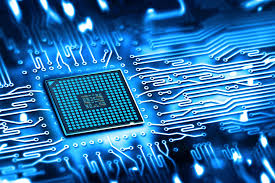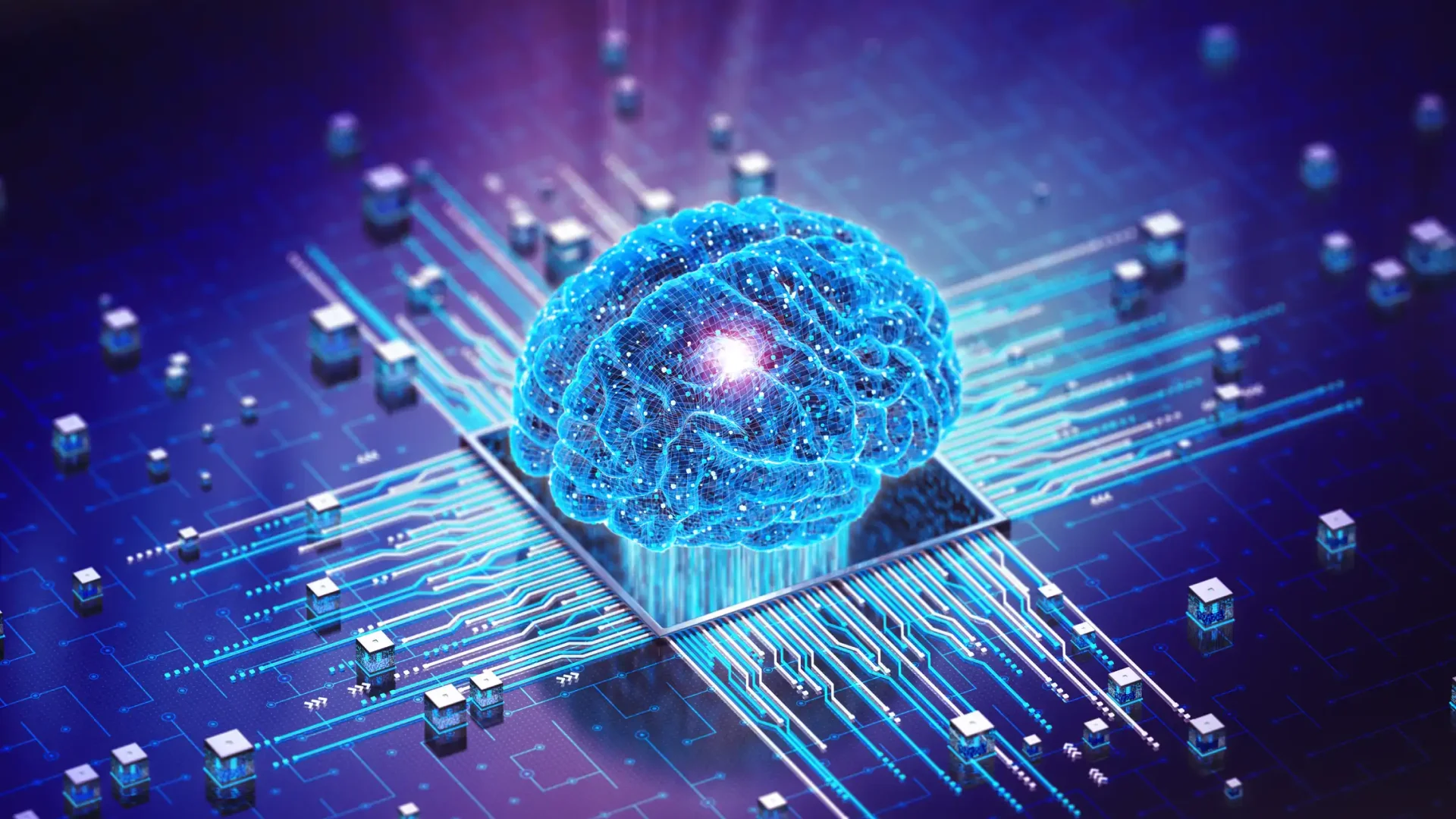 On-Page SEO Optimization – Fix Hidden Errors Killing Rankings!
On-Page SEO Optimization – Fix Hidden Errors Killing Rankings!
Neuromorphic Computing in Intralogistics: Enhancing Warehouse Efficiency and Automation
Written by Raima » Updated on: June 17th, 2025

Introduction:
The intralogistics sector, which deals with the internal movement of goods within warehouses and distribution centers, has been undergoing a dramatic transformation over the past decade. Driven by the need for enhanced efficiency, reduced operational costs, and real-time data analytics, businesses are increasingly turning to innovative technologies. From AI and machine learning to robotics and automation, a wide range of advancements are reshaping the way intralogistics operates.
One of the most groundbreaking developments in this space is the emergence of neuromorphic computing, a branch of AI that mimics the brain's structure and function to enhance decision-making processes. This innovation is leading to smarter, more adaptive intralogistics systems, enabling real-time learning, quicker decisions, and reduced energy consumption. In this article, we will explore how neuromorphic computing is playing a pivotal role in revolutionizing the intralogistics market and what it means for the future of warehouse operations.
1. Understanding Neuromorphic Computing: The Brain of AI
1.1. What is Neuromorphic Computing?
Neuromorphic computing is an emerging field in artificial intelligence that aims to replicate the neural networks of the human brain. Unlike traditional computer architectures, which process information sequentially, neuromorphic systems operate more like the brain, processing information in parallel. This allows them to handle complex, real-time data more efficiently and make decisions without relying on extensive computational power.
In essence, neuromorphic computing builds systems that learn, adapt, and perform tasks similar to human cognition but in a much faster and more energy-efficient manner.
1.2. Key Features of Neuromorphic Computing
Event-driven processing: Neuromorphic computing systems are based on event-driven models, where neurons only “fire” when needed, unlike conventional processors that run continuously. This results in significantly lower energy consumption.
Parallel processing: Like the brain, neuromorphic systems can process vast amounts of data simultaneously, improving the speed and efficiency of decision-making.
Self-learning capabilities: Neuromorphic chips are capable of self-organization, meaning they can adapt and learn from experience, improving over time.
1.3. Applications of Neuromorphic Computing
Neuromorphic computing is being applied across various industries, including healthcare, automotive, and, of course, logistics. Its ability to mimic human cognition makes it an ideal candidate for applications that require real-time decision-making and adaptive learning, such as in intralogistics.
2. Neuromorphic Computing in Intralogistics: Enhancing Efficiency and Decision-Making
2.1. Smarter Warehouse Management Systems (WMS)
The core function of a Warehouse Management System is to track the movement of inventory in real-time, optimize storage, and manage the picking and shipping of goods. With the addition of neuromorphic computing, WMS can be made smarter by learning from historical data and adapting to new patterns. This can result in:
Download FREE Sample of Warehouse Management Systems Market
Faster decision-making: Neuromorphic systems can process large amounts of real-time data and make faster, more accurate decisions, improving the overall flow of goods within the warehouse.
Predictive analytics: Neuromorphic WMS can predict demand fluctuations, enabling warehouses to proactively manage inventory and reduce stockouts or overstocking.
Dynamic optimization: The system can adapt to changing variables such as order volumes, worker availability, and warehouse layout in real time.
2.2. AI-Powered Robotics and Automation
Intralogistics heavily relies on automation, with robotic systems performing tasks like picking, packing, sorting, and transporting goods. Neuromorphic computing further elevates automation by making these robots more intelligent, adaptive, and capable of handling unpredictable environments.
Autonomous navigation: Neuromorphic robots can learn from their surroundings and navigate complex, dynamic warehouse layouts without pre-programmed paths.
Real-time adjustments: Neuromorphic robots can adapt to sudden changes, such as shifting inventory or unexpected obstacles, ensuring minimal disruption in operations.
Improved human-robot collaboration: Neuromorphic computing enables more natural collaboration between robots and human workers by allowing robots to understand and respond to human actions in real time.
2.3. Reduced Energy Consumption in Warehouse Operations
One of the biggest challenges in warehouse automation is the energy consumption required to power systems like AI algorithms, robotics, and WMS. Traditional computing systems consume significant power to process vast amounts of data. However, neuromorphic computing provides a much more energy-efficient solution by mimicking the brain’s ability to process information using minimal energy.
Energy efficiency: Neuromorphic chips can process data only when necessary, significantly reducing the energy required for operations.
Sustainability: With businesses increasingly focusing on sustainability, neuromorphic systems can help reduce the carbon footprint of warehouse operations while maintaining high performance and efficiency.
3. Benefits of Neuromorphic Computing in Intralogistics
3.1. Enhanced Real-Time Decision-Making
Neuromorphic computing’s ability to process vast amounts of data in parallel makes it ideal for real-time decision-making in fast-paced environments such as warehouses. For example, in an automated picking system, neuromorphic AI can quickly adapt to changing order volumes, adjusting inventory levels or changing routes for robotic systems on the fly.
Instantaneous responses to customer orders and operational changes, increasing customer satisfaction and operational efficiency.
Minimized delays in processing orders, reducing bottlenecks and streamlining the entire supply chain process.
3.2. Improved Adaptability and Flexibility
Traditional systems often struggle to adapt to new conditions or environments. Neuromorphic computing, on the other hand, is highly adaptive and capable of learning from new experiences, improving over time without the need for manual programming.
Adaptability to evolving warehouse environments: Neuromorphic systems can quickly learn new warehouse layouts, workflows, and processes, making them highly flexible in a dynamic environment.
Handling unpredictability: Neuromorphic systems can learn to anticipate changes in product demand, supply chain interruptions, and even labor shortages, enabling quicker and more accurate responses.
3.3. Lower Operational Costs
Neuromorphic computing contributes to cost savings in intralogistics by reducing the need for traditional hardware resources and human oversight. It also helps lower energy consumption, a key operational expense for automated systems.
Reduced reliance on energy-intensive systems: Neuromorphic computing requires significantly less energy than traditional AI systems, leading to long-term savings.
Fewer human errors: With its self-learning capabilities, neuromorphic systems help reduce human errors that can lead to costly mistakes, such as mispicks or inventory discrepancies.
4. Future Prospects: The Role of Neuromorphic Computing in the Future of Intralogistics
4.1. Full Automation in Warehouses
As neuromorphic computing advances, we are moving closer to achieving fully autonomous warehouses. Neuromorphic systems will enhance the capabilities of robots, drones, and WMS, creating an entirely self-sufficient and self-learning supply chain.
Robots will become even smarter, able to pick, pack, and transport goods in an autonomous fashion with little to no human intervention.
Real-time optimization of warehouse space and processes will be possible, further reducing operational costs.
4.2. Real-Time Supply Chain Visibility
Neuromorphic computing will help enhance real-time supply chain visibility by processing data from multiple sources in parallel. Warehouse systems will be able to detect supply chain disruptions before they occur, leading to improved forecasting and preemptive action.
Enhanced collaboration across the supply chain: Information sharing between suppliers, warehouses, and retailers will be more seamless, enabling faster decision-making and more efficient operations.
4.3. Human-Machine Collaboration
As AI and robotics become more integral to intralogistics, human-machine collaboration will be enhanced with neuromorphic computing. Neuromorphic robots will be able to respond to human gestures, voice commands, and even thoughts, creating more intuitive interactions between humans and machines in the warehouse environment.
More effective task delegation: Workers and machines will work side by side more efficiently, with the machine systems learning from human interactions and adapting to human actions.
Conclusion
Neuromorphic computing is undoubtedly one of the most exciting advancements in the field of intralogistics. By mimicking the way the human brain works, neuromorphic systems provide smarter, faster, and more efficient solutions for warehouse operations. From improving decision-making and adaptability to reducing energy consumption and operational costs, this technology is reshaping the logistics landscape.
As we look to the future, neuromorphic computing holds the potential to unlock fully autonomous warehouses, real-time supply chain visibility, and enhanced human-machine collaboration. For businesses in the intralogistics sector, staying ahead of these emerging technologies will be crucial to maintaining competitive advantage in an increasingly automated and data-driven world.
Read the complete blog
Note: IndiBlogHub features both user-submitted and editorial content. We do not verify third-party contributions. Read our Disclaimer and Privacy Policyfor details.
Copyright © 2019-2025 IndiBlogHub.com. All rights reserved. Hosted on DigitalOcean for fast, reliable performance.














